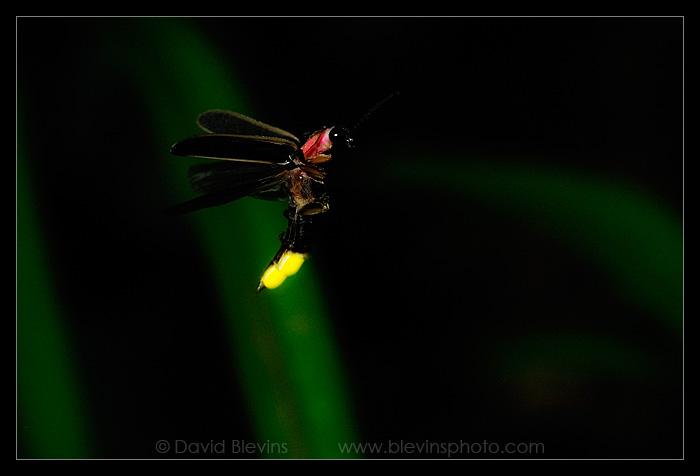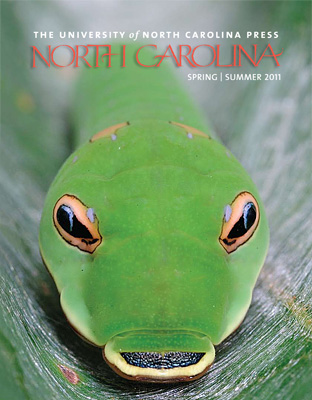This week I worked out a method for making a close-up photograph of a firefly in flight, at night, with its lantern lit. It is an almost impossible photograph to make, but that’s why it was so fun. This is the story of how I did it.
The first problem I had to solve was how to get the firefly in the frame and in focus. They are impossible to see through the viewfinder and shooting from the hip is just not accurate enough for the narrow angle of view of a macro lens. Autofocus is also out of the question because there is not enough light for the autofocus sensor and the subject is too small and fast for autofocus even in daylight. So I invented the Blevins Firefly Pointing Device (patent pending) to make shooting from the hip more possible. It is a wire coat hanger bent into a loop at one end that is attached to the camera tripod mount and bent into a right angle at the other end that points toward the center of the composition (but positioned just out of frame). With the lens manually focused to the same distance as the end of the pointer, you just need to position the subject above the pointer to hopefully capture an image with the subject in frame and in focus.
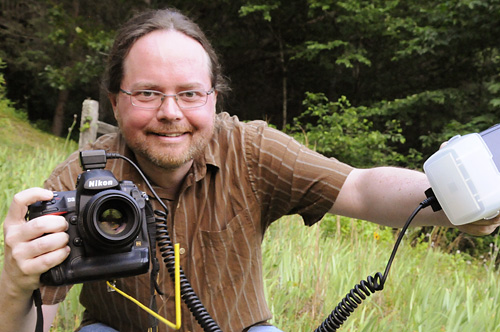
The Blevins Firefly Pointing Device in action
Photographing a firefly with its lantern lit required a lot of practice and luck. The first three evenings I spent chasing them around my yard taught me the characteristic flight pattern of this species. These are the Common Eastern Firefly (Photinus pyralis), also sometimes called the Big Dipper Firefly because its flight pattern is somewhat like the shape of that constellation. To attract the attention of a female, the male will start from a hover, then accelerate horizontally, often with a slight downward slope, then pull up sharply into another hover. The flash occurs just as he begins to pull up and creates a J shaped streak of yellow-green light. Learning to recognize this pattern made it possible to anticipate when the flash would occur, which was helpful. Unfortunately, the flash occurs while the firefly is moving and changing direction which means the camera needs to be moving along with the firefly.
The other challenge was balancing the exposure from the light that comes from the camera flash with the light that comes from the firefly so both will show up in the photograph. Here are a few images from early in the process where I was trying to work out how to balance the light.
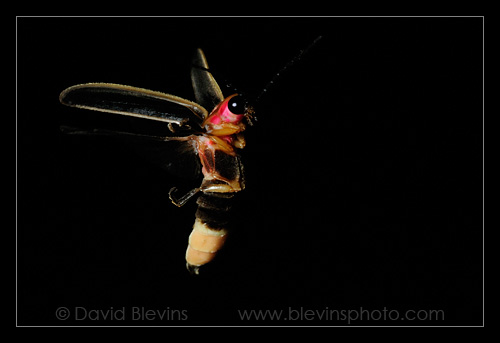
This image was made with a small aperture for maximum depth of field to increase the chance of capturing an image in focus. The firefly's lantern was not bright enough to show up with such a small lens aperture, only the light from the camera flash registers in this image.
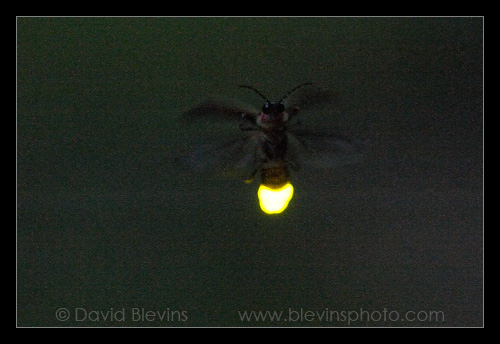
This image was made with no camera flash, just the dim ambient light of dusk. The high ISO required to achieve a fast shutter speed to freeze the motion of a fast flying insect rendered noisy images and overexposed the firefly's light.
I eventually arrived at the best settings to balance these two approaches, with just enough sensitivity to render the firefly’s light as the brightest part of the image, and just enough light from the camera flash to capture the details of the firefly. I eventually settled on an aperture of f/16, a shutter speed of 1/250th of a second, and an ISO of 1600. I set the flash to minimum power and held it 10 to 12 inches from the subject.
After several evenings of really getting into this I found myself dancing around my yard in big dipper patterns with my flash going off just as I moved up sharply, just like a firefly. I suddenly became self conscious and hoped the neighbors were not becoming concerned, I am sure I looked ridiculous.
By the fifth evening I finally had the technique down, but even with all the practice it still took a lot of luck and most exposures were out of focus or otherwise unusable. I also discovered I was not the only one that got lucky that night…
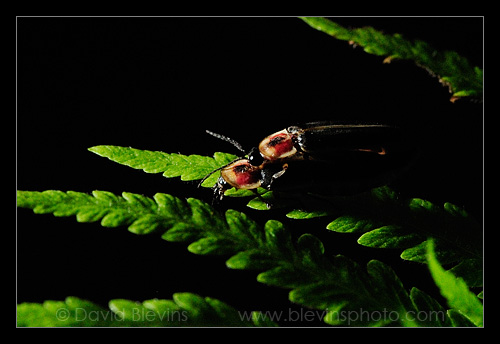
Common eastern fireflies mating

